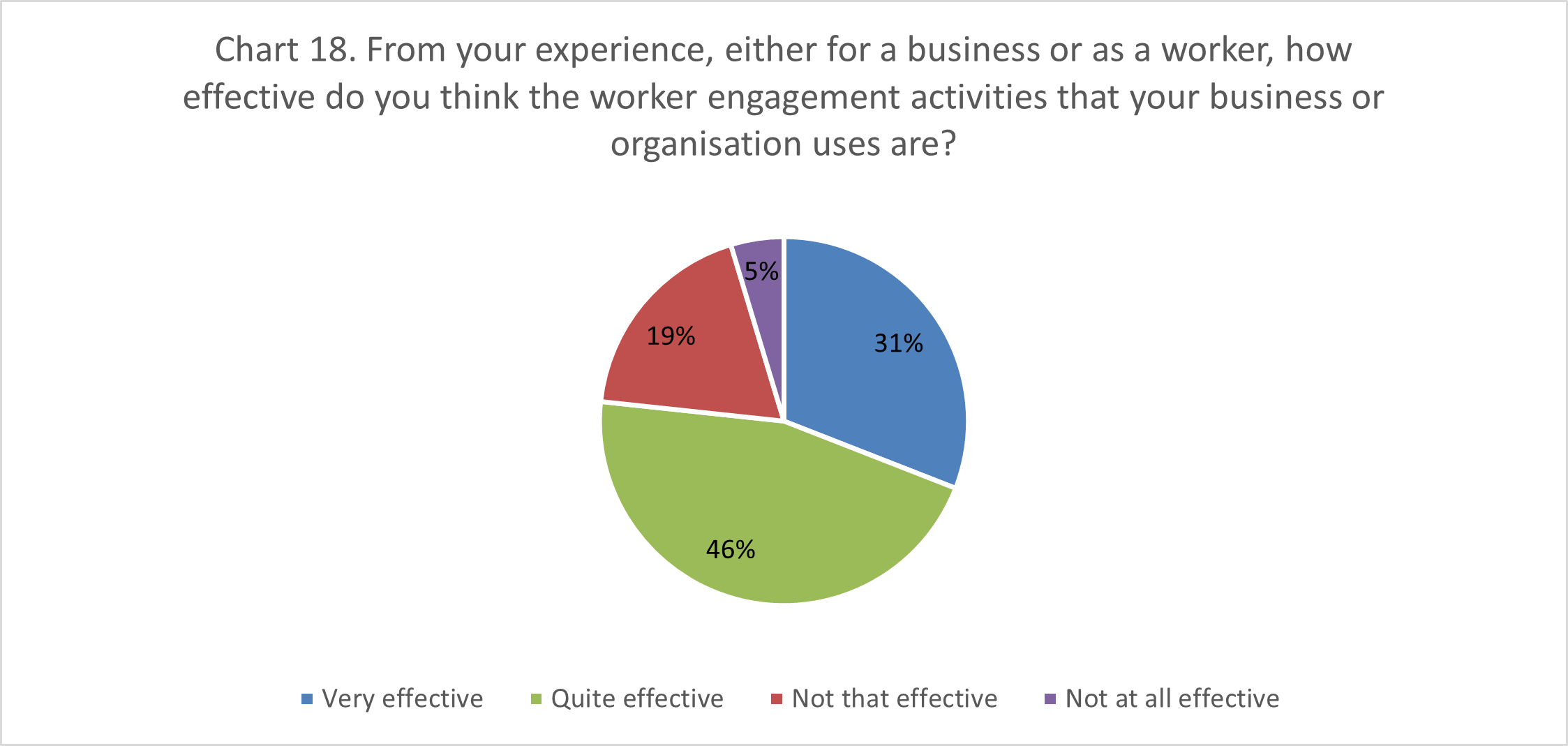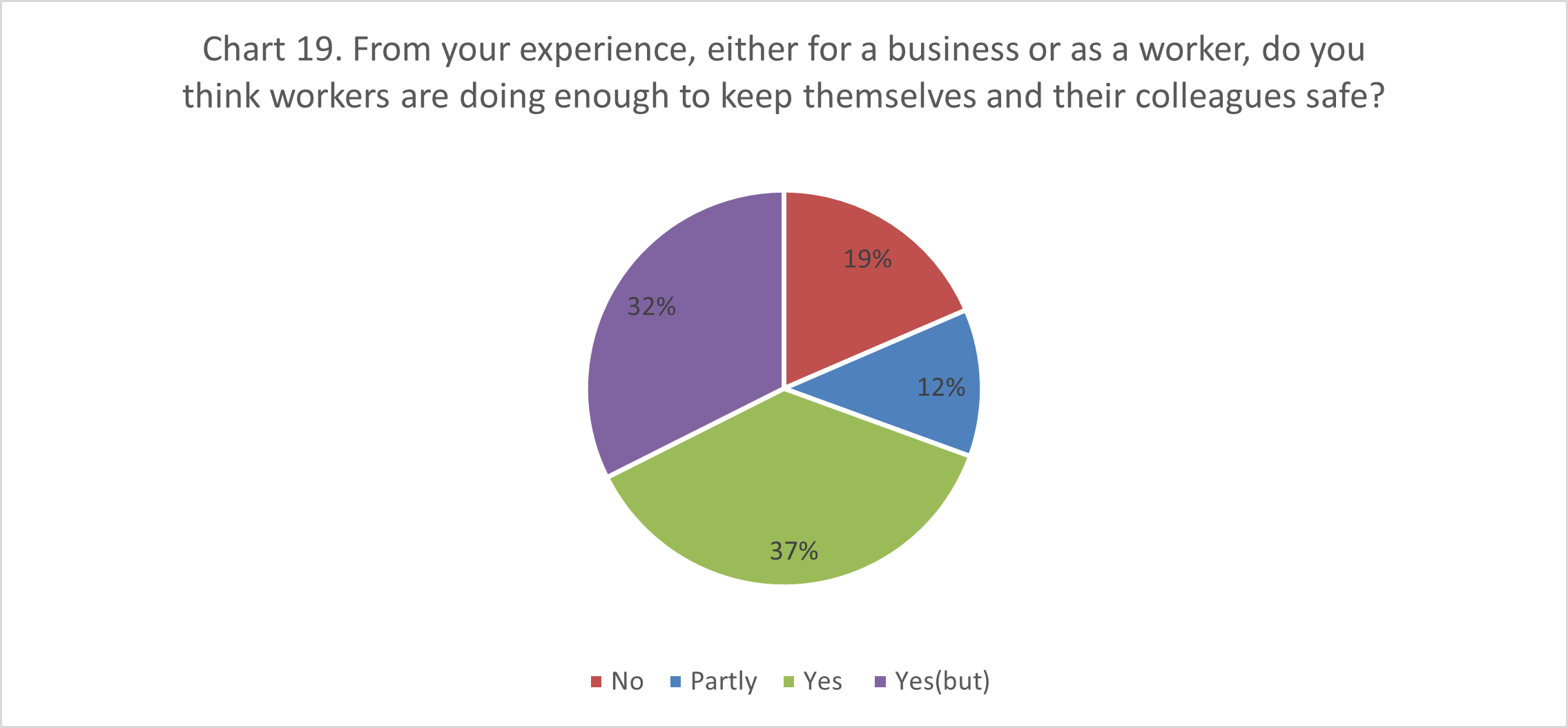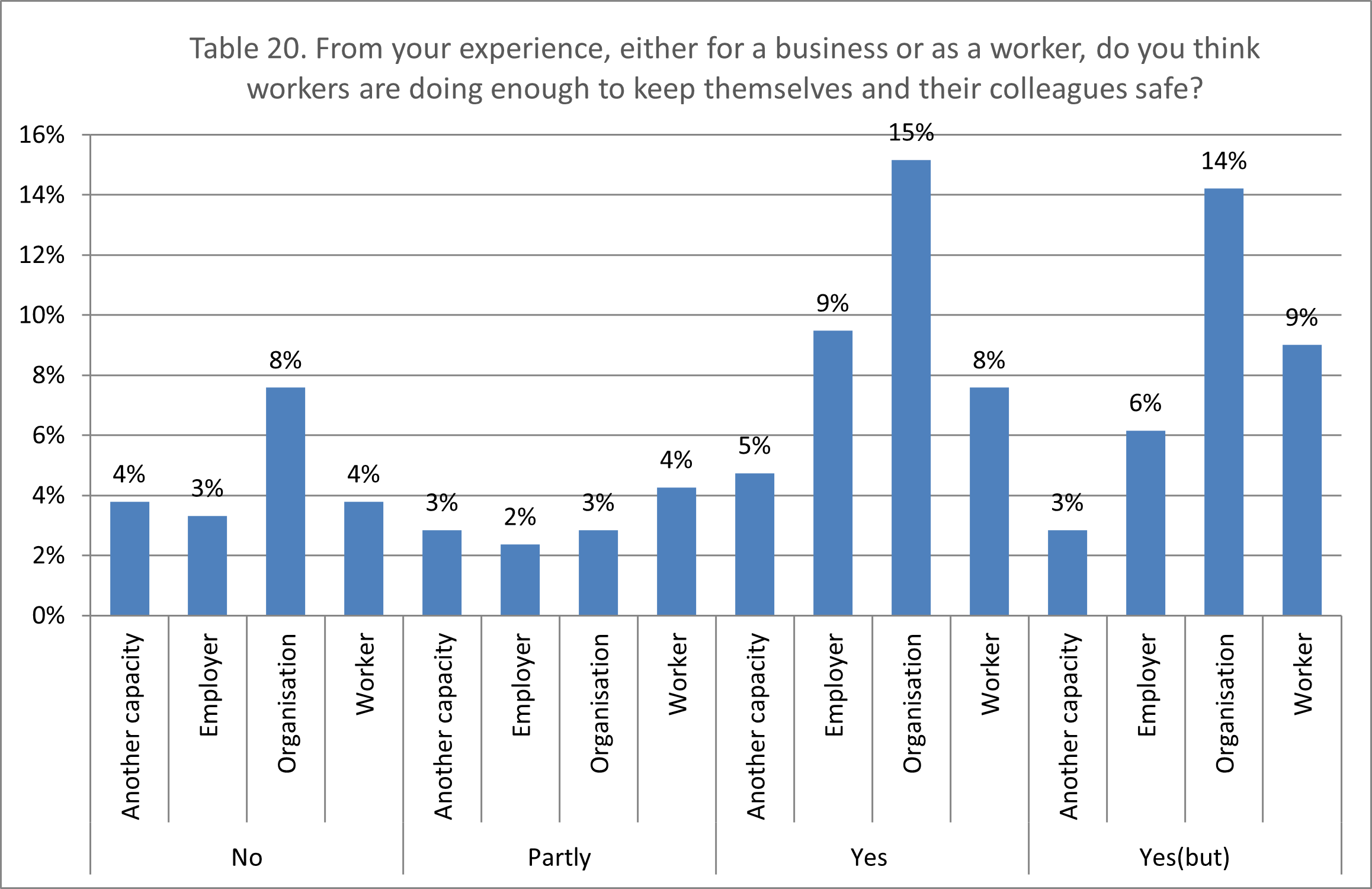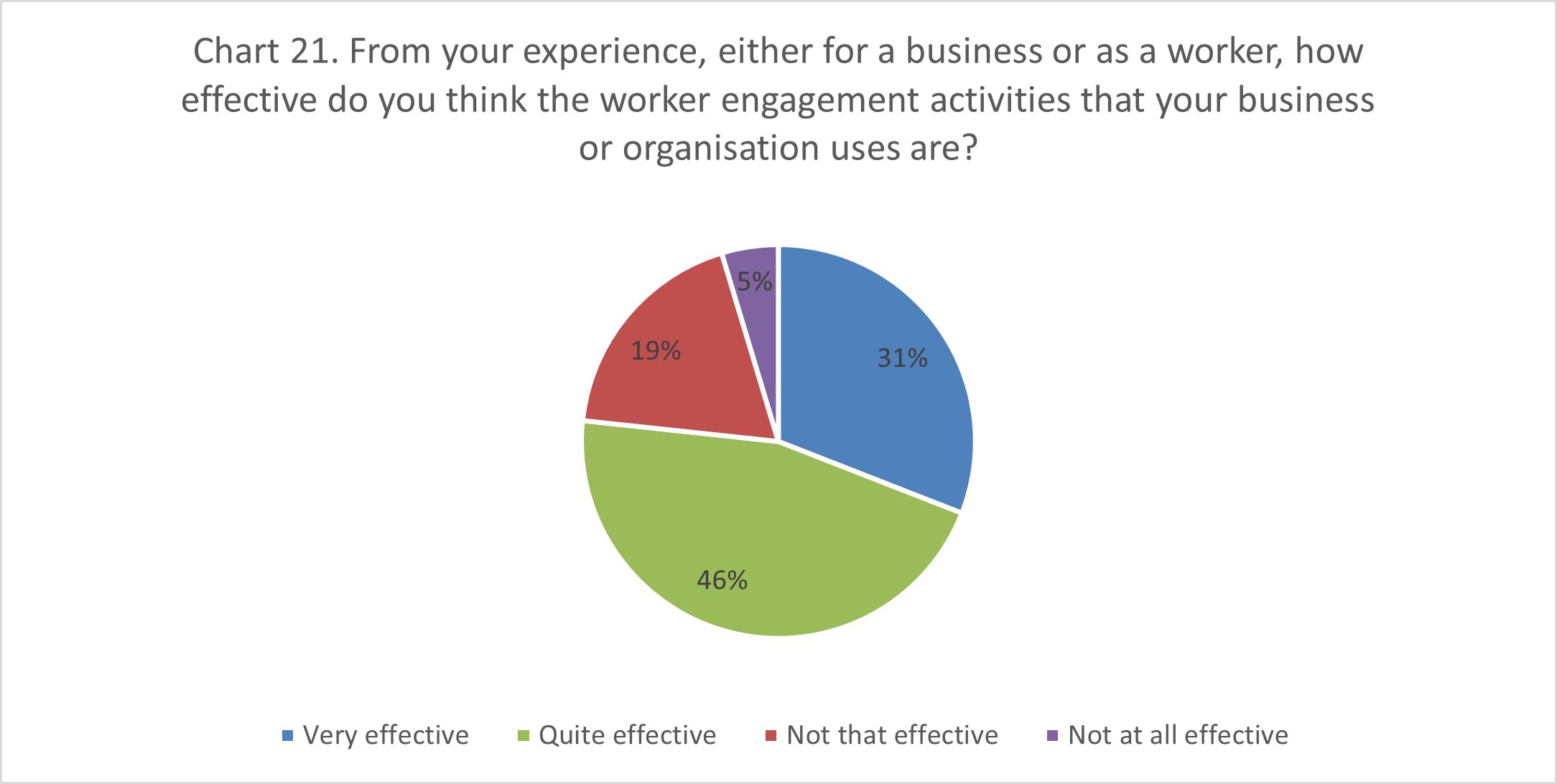Focus area three: worker engagement and participation
This Focus Area sought feedback on how businesses and organisations engage with workers, how workers participate in work health and safety, and the impact this has on work health and safety.
On this page I tēnei whārangi
Submissions summary
- Most respondents reported engagement between employers and workers via elected work health and safety representatives, informal work health and safety representatives or champions, work health and safety committees, a system for regular work health and safety communications, regular meetings where work health and safety is discussed and regular work health and safety briefings.
- Most thought these actions were either very or quite effective, with some considering them to be either not that effective or not at all effective.
- Most considered that workers are doing enough to keep themselves and their colleagues safe, with some considering they are partly doing enough or not doing enough.
Illustrative quotes from submissions
A manufacturing business with less than 10 employees – “We have a very positive Health and Safety culture, and I believe it’s because our workers are given the opportunity to participate positively and be heard in Health and Safety.”
A worker from a large manufacturing business – “That is a really difficult question. People generally don't actively work to hurt themselves or others but in the process of work, sometimes this inadvertently happens. Distractions, time pressures, gaps in processes/systems, etc. can lead to 'unsafe behaviour'. In my experience (30 years) in Health and Safety, people do what they think they need to do to work safely and get the job done within the boundaries of what they are asked to do and what resources are provided for them, but we are all prone to make mistakes.”
Feedback from the roadshows included that:
- Culture is important and engagement works well when driven by those on the ground, not just formal processes.
- Some Unions considered that work health and safety representatives are key as some employers do not take work health and safety seriously.
- Work health and safety Committees can be too formal, and can struggle to get engagement, and there may be need to ‘right-size’ and reframe work health and safety representatives and committees as working alongside management to improve things on the ground.
- Training can be costly and time-consuming, but is often ineffective, paperwork-based, duplicative and impractical. This creates challenges, including:
- Workers taking work health and safety seriously is difficult when the paper-based systems do not reflect the reality of their jobs and the (often changing) risks they need to manage.
- Work health and safety is sometimes seen by workers as something that is done “to” them, and not something they have a stake in too.
- Some firms do this well by empowering workers to take responsibility, and making work health and safety practical and about how the job is done.
Specific Focus Area Three survey questions
What worker engagement and participation measures do you have in place?
- Most respondents reported engagement between employers and workers via elected work health and safety representatives, informal work health and safety representatives or champions, work health and safety committees, a system for regular work health and safety communications, regular meetings where work health and safety is discussed and regular work health and safety briefings.
From your experience, either for a business or as a worker, how effective do you think the worker engagement activities that your business or organisation uses are?
- Of the 233 respondents that answered this question, most thought these actions were either very or quite effective, with some considering them to be either not very effective or not at all effective.
Chart 18. From your experience, either for a business or as a worker, how effective do you think the worker engagement activities that your business or organisation uses are?

Data from chart
From your experience, either for a business or as a worker, do you think workers are doing enough to keep themselves and their colleagues safe?
- Of the 216 respondents that answered this question, most considered that workers are doing either enough, with some considering they are partly doing enough or not doing enough.
- Most thought these actions were either very or quite effective, with some considering them to be either not very effective or not at all effective.
Chart 19. From your experience, either for a business or as a worker, do you think workers are doing enough to keep themselves and their colleagues safe?

Data from graph
Table 20. From your experience, either for a business or as a worker, do you think workers are doing enough to keep themselves and their colleagues safe?

Data from chart
Chart 21. From your experience, either for a business or as a worker, how effective do you think the worker engagement activities that your business or organisation uses are?

Data from chart

